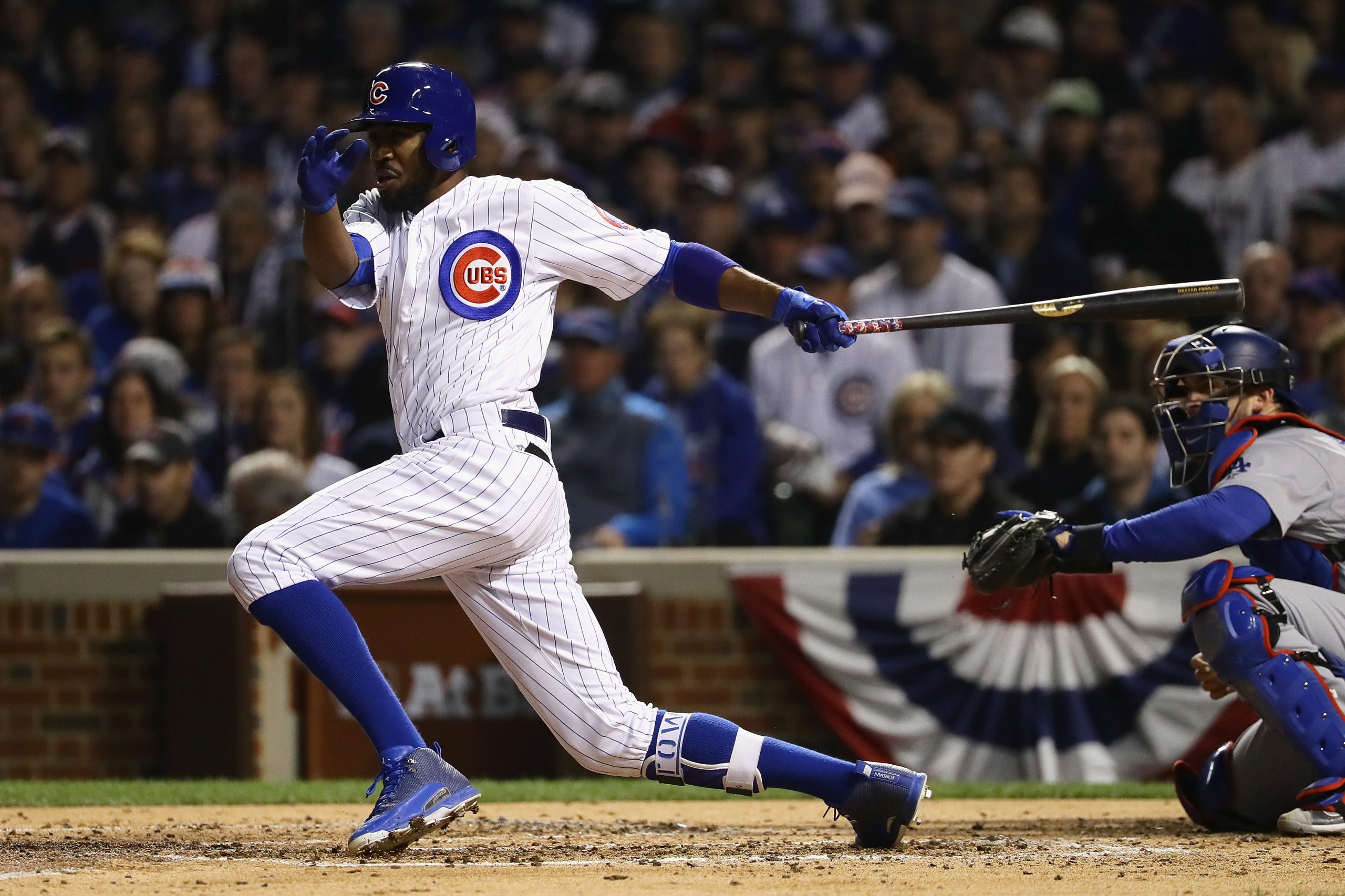For the first time in over 70 years, the Chicago Cubs are National League champions and have an opportunity to end the most excruciating drought in pro sports. While the roster is loaded with talent, a trip to the Fall Classic wouldn’t have been possible without one player in particular.
With the kind of star power Chicago possesses, Dexter Fowler probably isn’t the “X-factor” kind of player to roll off your tongue first, but he should be.
The Cubs won 103 games during the 2016 regular season, and it happened because their entire team is solid. Kyle Hendricks, Jon Lester and Jake Arrieta led a pitching staff that produced a league-best 3.15 ERA, while the offense boasts two MVP candidates in Anthony Rizzo and Kris Bryant.
So, why was it such a big deal when Theo Epstein and Co. agreed to a one-year deal with Fowler (including an option for 2017)? Let us count the ways as the Cubs prepare for their first World Series appearance since 1945.
He provided much-needed outfield depth
At the time of Fowler’s signing, there appeared to be a logjam in manager Joe Maddon’s outfield. Turns out the complete opposite was true.
Heading into Spring Training, the typical outfield alignment was slated to be Kyle Schwarber in left, Jason Heyward in center and Jorge Soler in right.
While Schwarber could be a factor in the World Series, he’s been out since April with a torn ACL and LCL. Heyward produced an underwhelming .631 OPS in the first season of an eight-year, $184 million deal. As for Soler, he struggled once again with consistency and also dealt with some injuries.
Every team wants their impact players to stay healthy, but that doesn’t always happen. When Schwarber got hurt, it was a big blow to the Cubs, but an unforeseen injury was the exact reason why they re-signed Fowler. Some were surprised by the move, but it was justified before the Cubs even played in their 10th game of the year.
He was an early-season MVP candidate
The NL MVP race took a few twists and turns over the past six months, but before Bryant began emerging as a favorite, Fowler made a case through the season’s first month.
At the end of April, Chicago owned an MLB-best 17-5 record. While the team produced the fourth-best OPS during this time (.796), Fowler was a huge reason why because he continually set the tone in the leadoff spot.
The center fielder hit an eye-popping .347/.474/.613 with three homers, 15 RBI and 19 runs scored over his first 75 at-bats. His overall season stats (.276/.393/.447 triple slash with 13 homers, 48 RBI and 84 runs scored in 456 at-bats) show a bit of regression from that huge start, but he still enjoyed a career year.
His 14.3 percent walk rate and 129 wRC+ were both the highest they’ve ever been, and his 30.6 percent hard-hit rate was the best he’s produced since his days with the Colorado Rockies.
Fowler’s performance at the plate continued progressing in 2016, but his impact as a player was felt way beyond what he did in the batter’s box.
He became a more complete ballplayer
Advanced metrics don’t always tell the whole story, but they can tell us quite a bit about the strides Fowler has made on defense. In 2014 with the Houston Astros, he produced a DRS (defensive runs saved) of -20. That number improved to -12 in ’15 with Chicago, but crept all the way up to 1 this season.
That doesn’t seem like a lot when only looking at the 2016 result, but the progression is significant, which was aided by changing his positioning in center field.
Fowler also made a drastic improvement in the base running department. FanGraphs calculates BsR, which is an all-encompassing stat used to evaluate how a player performs on the bases. After producing an average BsR of 0.2 in 2015, that number increased to an above average 6.2.
Not only did he reach base at a career-high clip, but he also took advantage of those opportunities more than ever before. This was all wrapped up into a neat little bow in the form of a 4.7 fWAR, easily the highest number of his career (previous best was 3.3 in ’15).
When he reaches base, good things normally happen
Setting the tone at the start of a game is important. When Fowler gets the Cubs rolling in the first inning, it usually means good things:
The #Cubs are 47-13 (.783) this season (including postseason) when Dexter Fowler reaches base safely to leadoff a game.
— Ryan M. Spaeder (@theaceofspaeder) October 23, 2016
That’s not a coincidence. For big boppers like Rizzo and Bryant to produce MVP-caliber numbers, players must already be on base to drive in and put pressure on the opposing defense.
That’s what their center fielder has done consistently throughout the 2016 season. There will be many facets of the game Chicago must execute to beat the Cleveland Indians and make history, but as we’ve seen over the last few months, it’s crucial for Dexter Fowler to be in the middle of the action.
He’s the engine that gets the offense going. If he can put immediate pressure on the Indians’ pitching staff and defense, we could see a sight that’s skipped a number of generations: the Cubs celebrating a World Series title.
Thanks for reading! If you’d like to jumpstart your sportswriting career and aren’t sure how, check out my eBook. Don’t forget to follow me on Twitter so we can chat about baseball: @mmusico8.
Add The Sports Daily to your Google News Feed!
